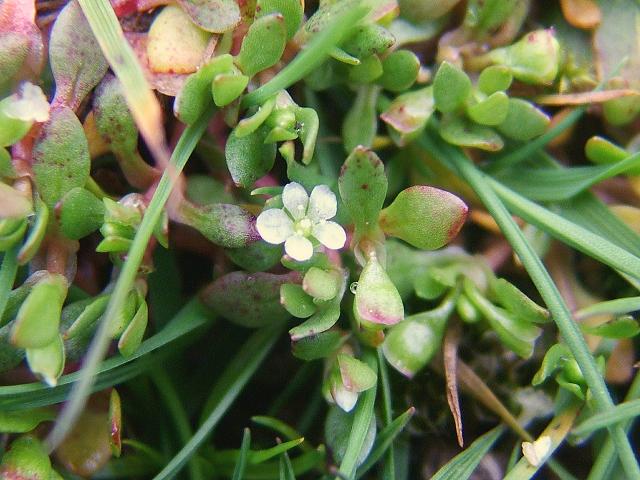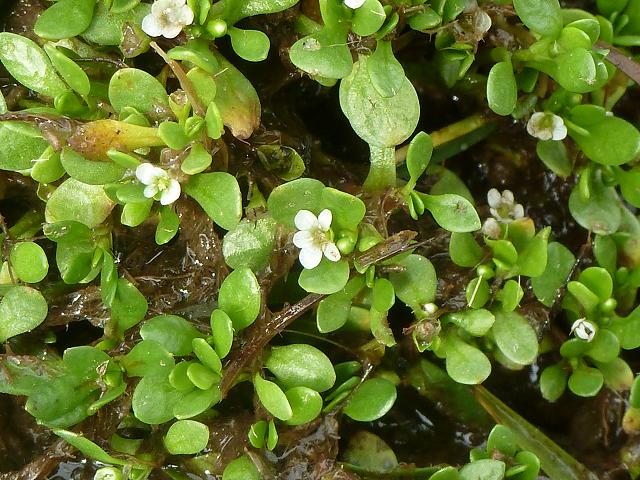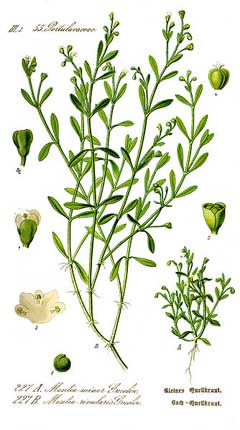Montia fontana
Bach - source herb ( Montia fontana )
The Bach source herb ( Montia fontana ) is a flowering plant in the family of the source herb plants ( Montiaceae ). It occurs worldwide in streams, ditches and wet fields.
Description
Vegetative characteristics
The Bach source herb grows as an annual to perennial herbaceous plant, reaching heights of growth 1-30 centimeters. They often form small stocks up mats. The stems are decumbent to erect or sometimes flutend in the water and on the lower nodes ( more nodes ) can be a rooting. The opposite, more or less sedentary leaves have a leaf blade, the linear to far wrong - lanceolate with acute to obtuse upper end and tapering at a length of 3 to 20 millimeters Spreitenbasis.
Generative features
The flowering period extends in California and in central Europe from June to August. The sometimes pendent, racemose inflorescences contain one to eight flowers. The lowest flowers are about one to two bracts. The hermaphrodite flowers are radial symmetry with a double perianth. The sepals are at a length of 1 to 2 millimeters round and trimmed. The three to five more or less unequal, white petals are only 1 to 2 millimeters long. There are three stamens present. The ovary is single chamber. The style ends in three stigma lobes.
1 to 2 mm long capsule fruit is trilocular and containing one to three seeds. The black seeds are 0.5 to 1.2 millimeters long, with more or less rough seed coat ( testa), which has pointed warts, and they have a round or flat appendage.
The chromosome number is 2n = 18, 20
Ecology
The Bach source herb is a marsh plant.
The flowers remain closed in cloudy weather, in addition to the self-pollination are also subject to insect pollination. It is usually self-pollination ( cleistogamy ).
The loculicidal capsule fruits cause self- propagation by seeds are thrown up by the three fruit roll-up flaps and subsequent catapulting to 2 meters wide and up to 0.6 meter. The fruit ripens from July to August.
System
For example, on the basis of seed coat four subspecies are distinguished:
- Montia fontana subsp. fontana
- Montia fontana subsp. chondrosperma
- Montia fontana subsp. amporitana
- Montia fontana subsp. variabilis
Use in the kitchen
In the Iberian Peninsula, the young stems and leaves are eaten before the flowering stage than traditional vegetables. Until the 19th century, the creek source herb in Germany was offered as a winter vegetable markets and prepared as Winzerlsalat or Schnippchensalat in Bavaria or Saxony.






2.JPG/220px-Montia_fontana_(mezenc,_43,_France)2.JPG)


